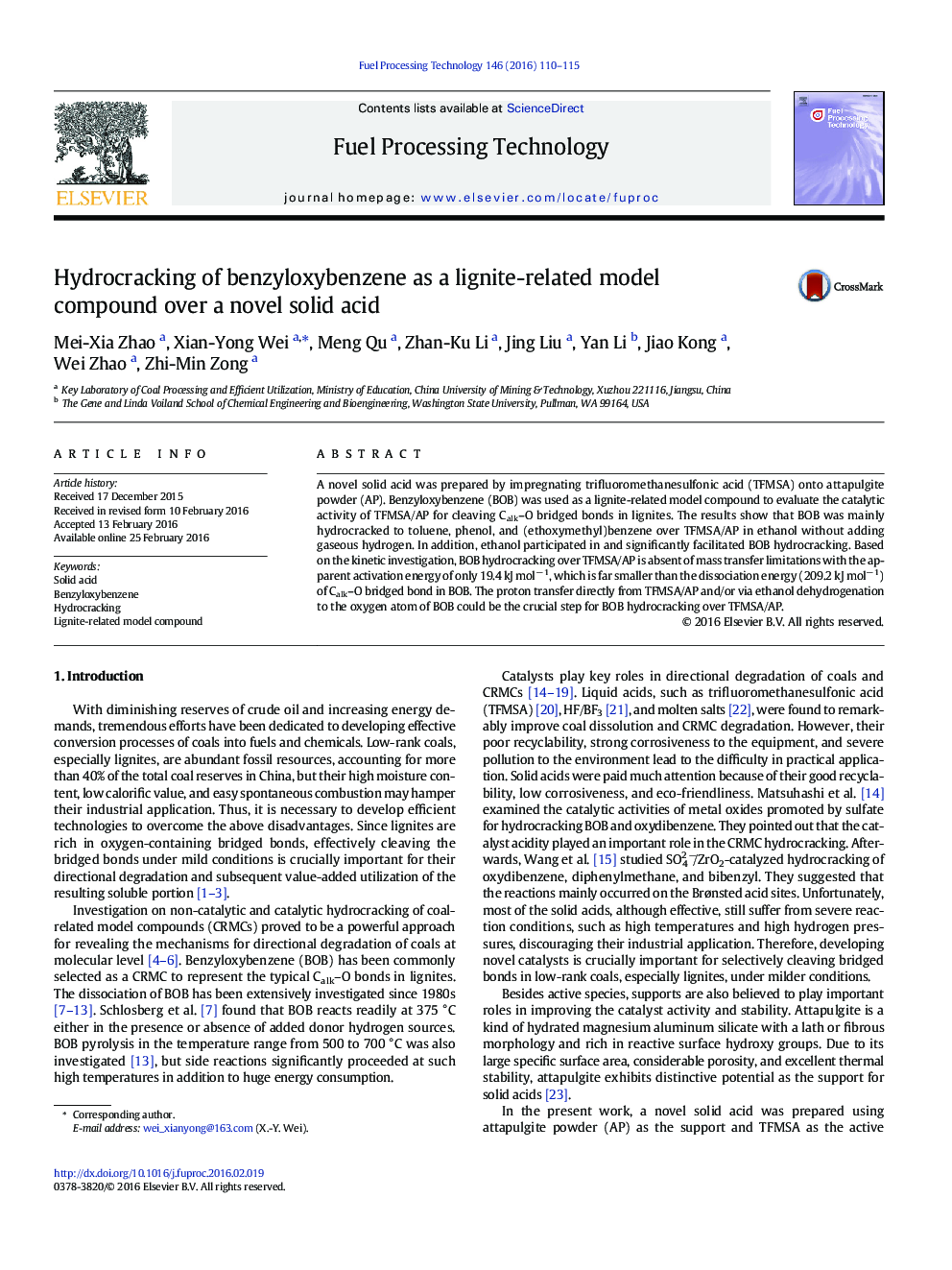| Article ID | Journal | Published Year | Pages | File Type |
|---|---|---|---|---|
| 209232 | Fuel Processing Technology | 2016 | 6 Pages |
•A novel solid acid was prepared by impregnating trifluoromethanesulfonic acid (TFMSA) onto attapulgite powder (AP).•Benzyloxybenzene (BOB) was mainly hydrocracked by TFMSA/AP without gaseous hydrogen.•The proton transfer from TFMSA/AP to the oxygen atom in BOB could be the crucial step.•TFMSA/AP significantly reduced the apparent activation energy of BOB hydrocracking.
A novel solid acid was prepared by impregnating trifluoromethanesulfonic acid (TFMSA) onto attapulgite powder (AP). Benzyloxybenzene (BOB) was used as a lignite-related model compound to evaluate the catalytic activity of TFMSA/AP for cleaving Calk–O bridged bonds in lignites. The results show that BOB was mainly hydrocracked to toluene, phenol, and (ethoxymethyl)benzene over TFMSA/AP in ethanol without adding gaseous hydrogen. In addition, ethanol participated in and significantly facilitated BOB hydrocracking. Based on the kinetic investigation, BOB hydrocracking over TFMSA/AP is absent of mass transfer limitations with the apparent activation energy of only 19.4 kJ mol− 1, which is far smaller than the dissociation energy (209.2 kJ mol− 1) of Calk–O bridged bond in BOB. The proton transfer directly from TFMSA/AP and/or via ethanol dehydrogenation to the oxygen atom of BOB could be the crucial step for BOB hydrocracking over TFMSA/AP.
Graphical abstractThe preparation of TFMSA/AP and BOB hydrocracking in ethanol over TFMSA/AP.Figure optionsDownload full-size imageDownload as PowerPoint slide
